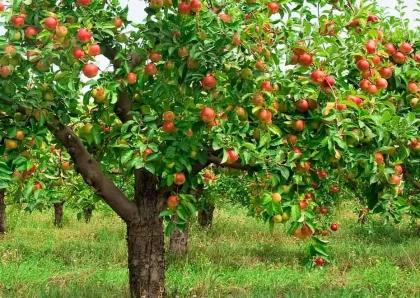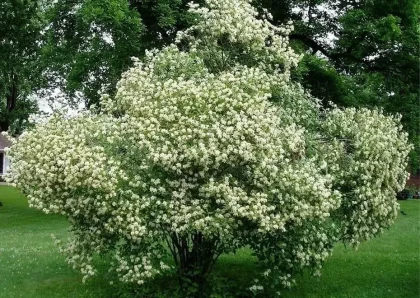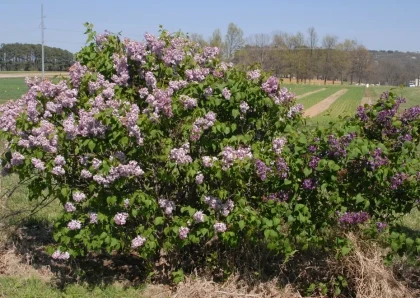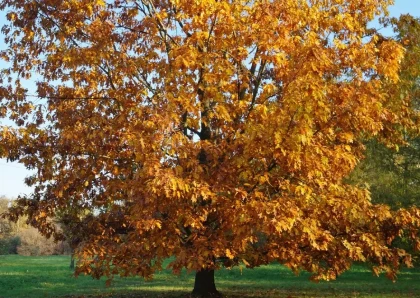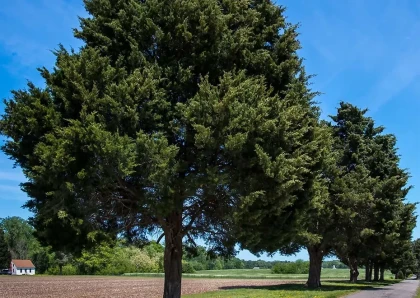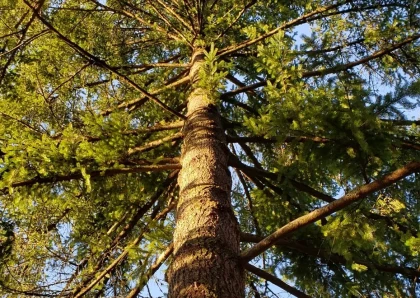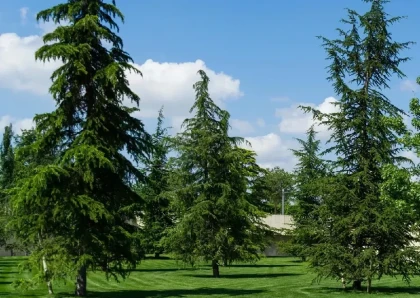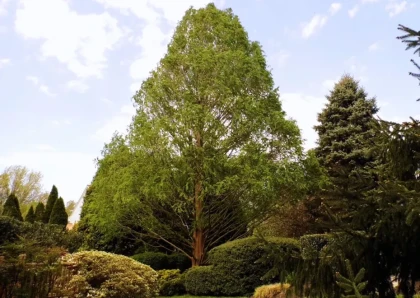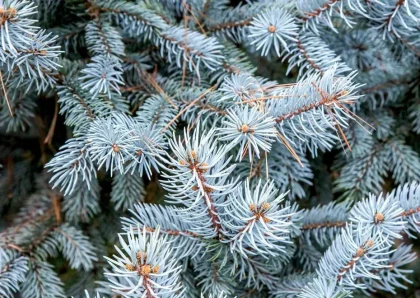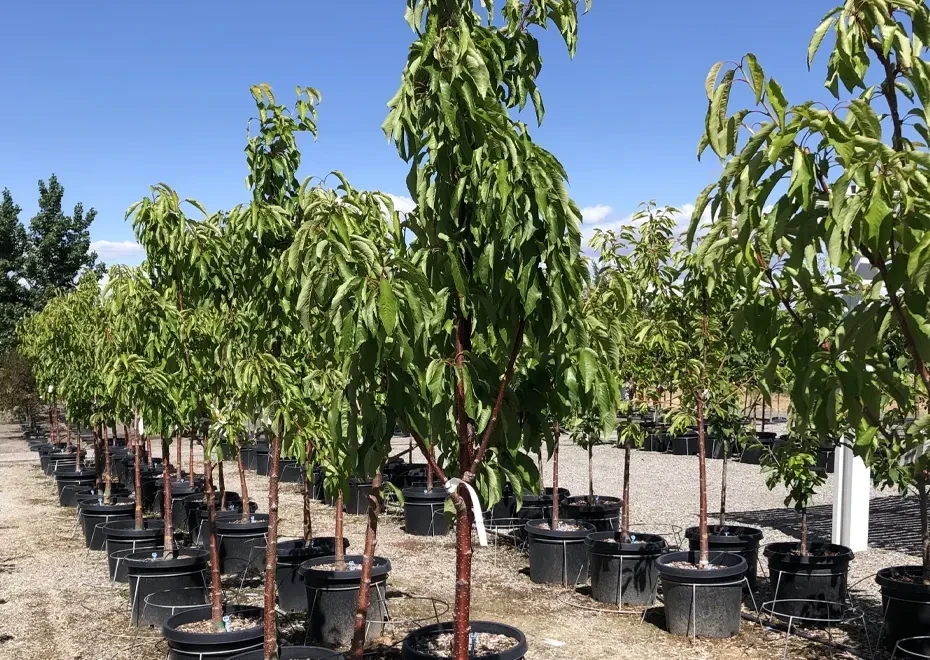
Black Tartarian Cherry Tree
Overview
Description
The Black Tartarian Cherry tree (Prunus avium 'Black Tartarian') is a popular cultivar of sweet cherry, which is a type of fruit-bearing tree in the Rosaceae family. It is known for producing large, dark purplish-black cherries with a sweet and rich flavor. The tree itself is deciduous and can reach a height of around 20-30 feet (6-9 meters) with a spread of 15-25 feet (4.5-7.5 meters) at maturity.
Characteristics
- Fruit: The cherries are medium to large in size, heart-shaped, and have dark purplish-black skin when fully ripe. The flesh is red, juicy, and sweet, making it excellent for fresh eating, baking, and preserves.
- Growing Season: The tree typically bears fruit in late spring to early summer, depending on the climate and location.
- Pollination: Sweet cherry trees, including the Black Tartarian, often require cross-pollination with another compatible sweet cherry variety for optimal fruit production. This means having another sweet cherry tree nearby to facilitate pollination.
- Climate: The Black Tartarian Cherry tree thrives in temperate climates with cold winters and mild summers, as found in many parts of North America and Europe.
- Care: Like other cherry trees, it requires full sun exposure and well-drained soil for optimal growth. Regular pruning and maintenance help in shaping the tree and promoting fruit production.
- Disease Susceptibility: Cherry trees can be susceptible to various pests and diseases, including cherry fruit fly, birds, and bacterial canker. Proper care and preventative measures can help minimize these issues.
Common Varieties of Black Tartarian Cherry
- Prunus avium 'Black Tartarian' - The classic and popular cultivar known for its large, sweet, and dark purplish-black cherries.
- Prunus avium 'White Tartarian' - A pale yellow to pinkish variety, producing sweet and delicious cherries with a lighter color than the black variety.
- Prunus avium 'Royal Ann' - Also known as Napoleon cherry or Queen Anne cherry, it yields large, creamy-yellow cherries with a red blush. These cherries are often used for canning and cooking.
- Prunus avium 'Lambert' - This variety produces large, dark red to almost black cherries with a sweet and rich flavor.
- Prunus avium 'Bing' - One of the most popular sweet cherry varieties, Bing cherries have a deep red to almost black color and a sweet, juicy taste.
Wood Products from Black Tartarian Cherry
- Furniture: The fine-grained and richly colored wood of Black Tartarian Cherry is commonly used to craft high-quality furniture, including tables, chairs, cabinets, and bedroom sets.
- Cabinetry: Due to its attractive appearance and workability, the wood is often utilized in cabinetry for kitchens, bathrooms, and other storage areas.
- Flooring: Black Tartarian Cherry wood can be transformed into elegant and durable hardwood flooring, adding warmth and character to homes and commercial spaces.
- Millwork: The wood is employed in millwork applications such as moldings, trim, and decorative elements due to its aesthetic appeal.
- Wood Crafts: Craftsmen and artisans use Black Tartarian Cherry to create a variety of wood crafts, such as bowls, cutting boards, and small decorative items.
- Musical Instruments: The tonal properties of the wood make it suitable for crafting certain musical instruments, like guitars, violins, and other stringed instruments.
- Caskets and Urns: The wood is also employed in the creation of caskets and urns, offering an elegant and natural resting place for loved ones.
Benefits of Black Tartarian Cherry
- Delicious and Nutritious Fruit: The primary benefit of Black Tartarian Cherry is its delicious and sweet fruit. The cherries are not only a tasty treat for fresh eating but can also be used in various culinary applications like pies, jams, and desserts.
- Rich in Antioxidants: Cherries, including Black Tartarian Cherries, are known for their high antioxidant content. Antioxidants help combat oxidative stress and inflammation in the body, potentially contributing to improved overall health.
- Vitamins and Minerals: These cherries are a good source of essential vitamins and minerals, including vitamin C, potassium, and fiber.
- Heart Health: The antioxidants and potassium found in cherries may support heart health by helping to regulate blood pressure and reduce the risk of cardiovascular diseases.
- Anti-Inflammatory Properties: Some studies suggest that cherries, including Black Tartarian Cherries, may have anti-inflammatory properties, which could benefit individuals with inflammatory conditions.
- Sleep Support: Cherries naturally contain melatonin, a hormone that helps regulate sleep-wake cycles. Consuming cherries or cherry products may potentially aid in promoting better sleep.
- Natural Pain Relief: Cherries are believed to possess pain-relieving properties, and some athletes use cherry juice to help reduce muscle soreness and aid recovery after intense workouts.
- Versatile Landscaping: Apart from their fruit-bearing qualities, cherry trees, including the Black Tartarian, can be used in landscaping due to their attractive appearance and springtime blossoms.
- Wildlife Attraction: Cherry trees are known to attract wildlife, including birds and pollinators, which can have positive effects on the local ecosystem.
- Sustainability: Growing cherry trees can contribute to sustainable agriculture and support biodiversity in orchards and surrounding areas.
- Culinary Uses: The wood of Black Tartarian Cherry can be utilized to create various wood products, including furniture, cabinetry, and decorative items.
- Aesthetic Appeal: Black Tartarian Cherry trees' beautiful blossoms in spring and colorful foliage in the fall add visual interest to landscapes and gardens.
Tips for Planting and Maintaining Black Tartarian Cherry
- Choosing a Suitable Location: Select a planting location with full sun exposure, as cherry trees thrive in sunlight. Ensure the soil is well-draining and fertile to support healthy growth.
- Planting the Tree: Plant the Black Tartarian Cherry tree in early spring when the soil is workable. Dig a hole that is slightly larger than the tree's root ball. Gently place the tree in the hole and backfill with soil, making sure the root collar is level with the ground.
- Watering: Provide regular and deep watering during the tree's first year of establishment. Once established, water the tree during dry periods, especially when fruit is developing.
- Fertilizing: Fertilize the tree in early spring with a balanced fertilizer. Follow the manufacturer's instructions for application rates. Avoid excessive nitrogen fertilization, as it may promote excessive vegetative growth at the expense of fruiting.
- Pruning: Prune the tree during the dormant season to remove dead or diseased wood and to shape the tree. Proper pruning helps maintain an open canopy, allowing sunlight to reach all parts of the tree.
- Pest and Disease Control: Monitor the tree regularly for pest infestations and signs of diseases. Apply appropriate pest control measures if necessary, and promptly address any disease issues to prevent their spread.
- Cross-Pollination: If planting multiple cherry trees, ensure that there is another sweet cherry variety nearby for cross-pollination, as it can significantly improve fruit production.
- Harvesting: Harvest the cherries when they are fully ripe and have developed their dark purplish-black color. Use a gentle twisting motion to detach the cherries from the stems.
- Enjoying the Fruit: Use the freshly harvested cherries for various culinary delights like fresh eating, baking, preserves, and desserts. Share the delicious harvest with family and friends!
Conclusion
In conclusion, the Black Tartarian Cherry (Prunus avium 'Black Tartarian') is a delightful and popular sweet cherry cultivar known for its large, dark purplish-black cherries with a sweet and rich flavor. It offers various benefits, including being a rich source of antioxidants, vitamins, and minerals, supporting heart health, and potentially aiding in sleep and providing natural pain relief.
However, there are some considerations when planting and maintaining Black Tartarian Cherry. It requires a suitable climate with cold winters and mild summers, and proper cross-pollination with another compatible sweet cherry variety is necessary for optimal fruit production. The tree may be vulnerable to pests and diseases, requiring regular monitoring and care. Additionally, its large size and maintenance needs, including pruning and watering, should be taken into account.
Despite these challenges, with proper planning and care, the Black Tartarian Cherry can be a valuable addition to a garden or orchard. Its attractive appearance, delicious fruit, and potential for use in various wood products make it a cherished choice for both fruit production and landscaping. If the right conditions and care are provided, this cherry tree can thrive, providing bountiful harvests of sweet, juicy cherries for many years to come.
FAQs
1. What is Black Tartarian Cherry?
Black Tartarian Cherry (Prunus avium 'Black Tartarian') is a popular sweet cherry cultivar known for its large, dark purplish-black cherries with a sweet and rich flavor. It is a deciduous fruit-bearing tree that can reach a height of around 20-30 feet (6-9 meters).
2. When does Black Tartarian Cherry tree bear fruit?
Black Tartarian Cherry trees typically bear fruit in late spring to early summer, depending on the climate and location. The fruiting season is relatively short, so it's essential to enjoy the harvest while it lasts or preserve the fruit for later use.
3. Does Black Tartarian Cherry tree require cross-pollination?
Yes, Black Tartarian Cherry trees require cross-pollination with another compatible sweet cherry variety for optimal fruit production. Planting another cherry tree nearby can facilitate pollination and increase fruit yield.
4. What type of climate does Black Tartarian Cherry prefer?
Black Tartarian Cherry trees thrive in temperate climates with cold winters and mild summers. They may not do well in regions with extreme heat or arid conditions.
5. How should I care for a Black Tartarian Cherry tree?
Proper care for a Black Tartarian Cherry tree includes choosing a sunny and well-draining planting location, providing regular watering during the establishment period, fertilizing in early spring, and pruning during the dormant season to maintain an open canopy. Monitoring for pests and diseases and addressing issues promptly is also important for healthy tree growth.
6. Are Black Tartarian Cherries edible?
Yes, Black Tartarian Cherries are edible and are known for their sweet and delicious taste. They can be enjoyed fresh, used in baking, preserves, and various culinary delights.
7. Can Black Tartarian Cherry wood be used for anything?
Yes, the wood of Black Tartarian Cherry can be used for various wood products, including furniture, cabinetry, flooring, millwork, wood crafts, and even certain musical instruments.
No listings available
Related Products
Golden Jubilee Peach Tree
Prunus persica 'Golden Jubilee' is a specific cultivar of peach tree. It is a deciduous fruit tree belonging to the Rosaceae family. 'Golden Jubilee'...
Gray Dogwood
Cornus racemosa, commonly known as the gray dogwood or northern swamp dogwood, is a deciduous shrub native to eastern North America. It belongs to...
Common Fragrant Lilac
Syringa vulgaris, commonly known as the Common Lilac or French Lilac, is a deciduous shrub belonging to the genus Syringa in the olive family...
European Beech Tree
The European Beech (Fagus sylvatica) is a deciduous tree species native to much of Europe, including parts of western Asia. It is one of...
Emerald Arborvitae Tree
The Emerald Arborvitae (Thuja occidentalis 'Smaragd') is a popular evergreen tree or shrub in landscaping and gardening. It belongs to the cypress family (Cupressaceae)...
Eastern Red Cedar Tree
The Eastern Red Cedar, scientifically known as Juniperus virginiana, is a species of evergreen tree native to eastern North America. It belongs to the...
Douglas Fir Tree
The Douglas Fir (Pseudotsuga menziesii) is an evergreen coniferous tree that belongs to the Pinaceae family. It is one of the most common and...
Deodar Cedar Tree
The name "Deodar" is derived from the Sanskrit words "deva" (meaning "god") and "daru" (meaning "wood" or "tree"), hence it is often referred to...
Dawn Redwood Tree
The Dawn Redwood tree, scientifically known as Metasequoia glyptostroboides, is a deciduous coniferous tree that belongs to the family Cupressaceae. It is a unique...
Colorado Blue Spruce Tree
The Colorado Blue Spruce, scientifically known as Picea pungens, is a species of coniferous tree belonging to the Pinaceae family. It is native to...





